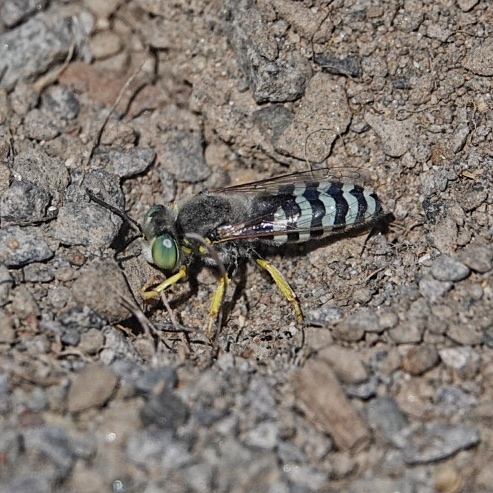
Proving the adage that habitat is where you find it, I found these very cool members of the wasp family Crabronidae in a very un-natural location. After photographing the Malva neglecta and Achillea millefolium I decided to cut across the track at the local high school on my way home. Near one end of it is a sunny, sandy area that they use for shot put and long jump events, which is slightly weedy at this time of year. No sooner had the thought occurred ‘could there be sand wasps here’ when something small and patterned whipped by my ankles. I quickly realized that they were, in fact, sand wasps, and spent the next 20 minutes or so on my hands and knees, with runners trotting by, football and frisbee players shouting to each other behind me, and thwacks and curses and laughter from the nearby tennis courts, fruitlessly trying to get close enough to photograph a sand wasp with my little TG 5.
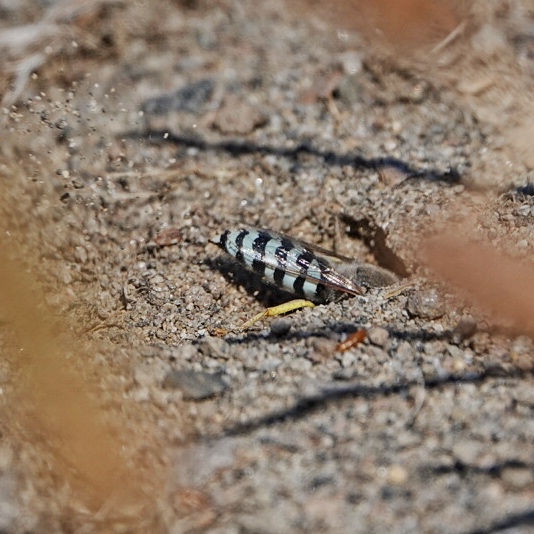
The next afternoon I was back, this time with a net and a camera with some range. There were at least 3 different species of crabronid wasps, but apparently only the one species of Bembix, although there were dozens of them. They were engaged in near constant activity, flying rapidly very low to the ground, landing to dig furiously into the sand, and flying up to chase off intruders, or disappearing into tiny open burrows. I managed to successfully photograph several (along with dozens of blurs and spaces-recently-occupied-by-a-wasp), and capture two.
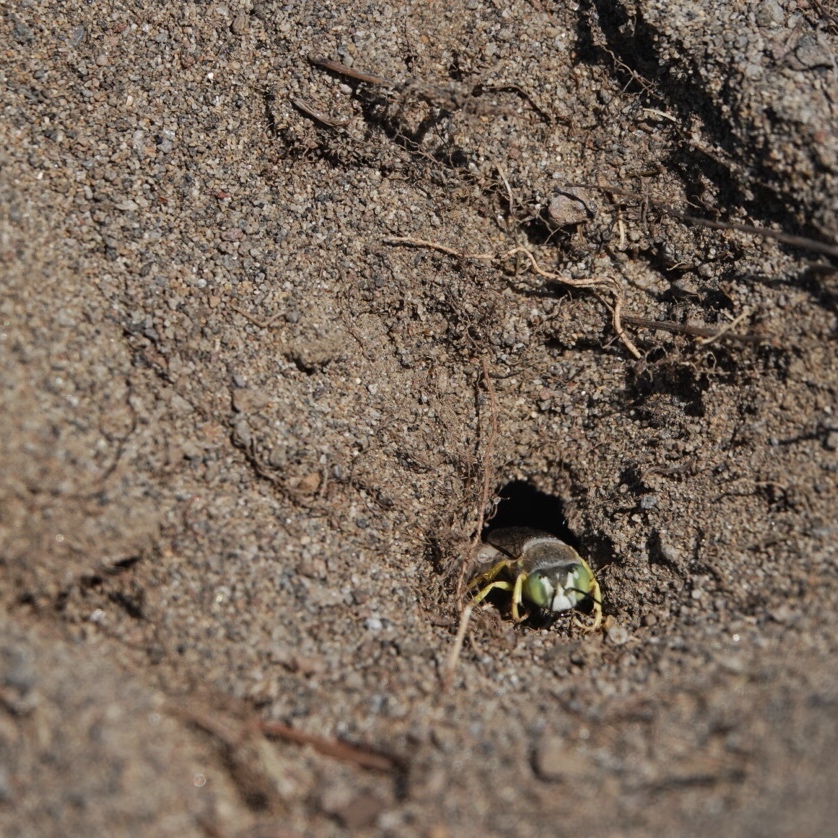
And I’m really glad I caught those two because the identification turned on microscopic characters (even getting to genus amongst these superficially similar genera may require some scope work; the only morphological difference between Bembix and Steniola that holds across species is that the ocellus is depressed in Bembix; between Bembix and Stictia and Bicyrtes the only consistent morphological characteristic that is different is that Bembix has palps that are much reduced; these are not things one can determine from photos taken in the field) that my photos didn’t show. Eventually I was able to ascertain, to my satisfaction, that these are Bembix americana, the most common and widespread Bembix sp. in North America.
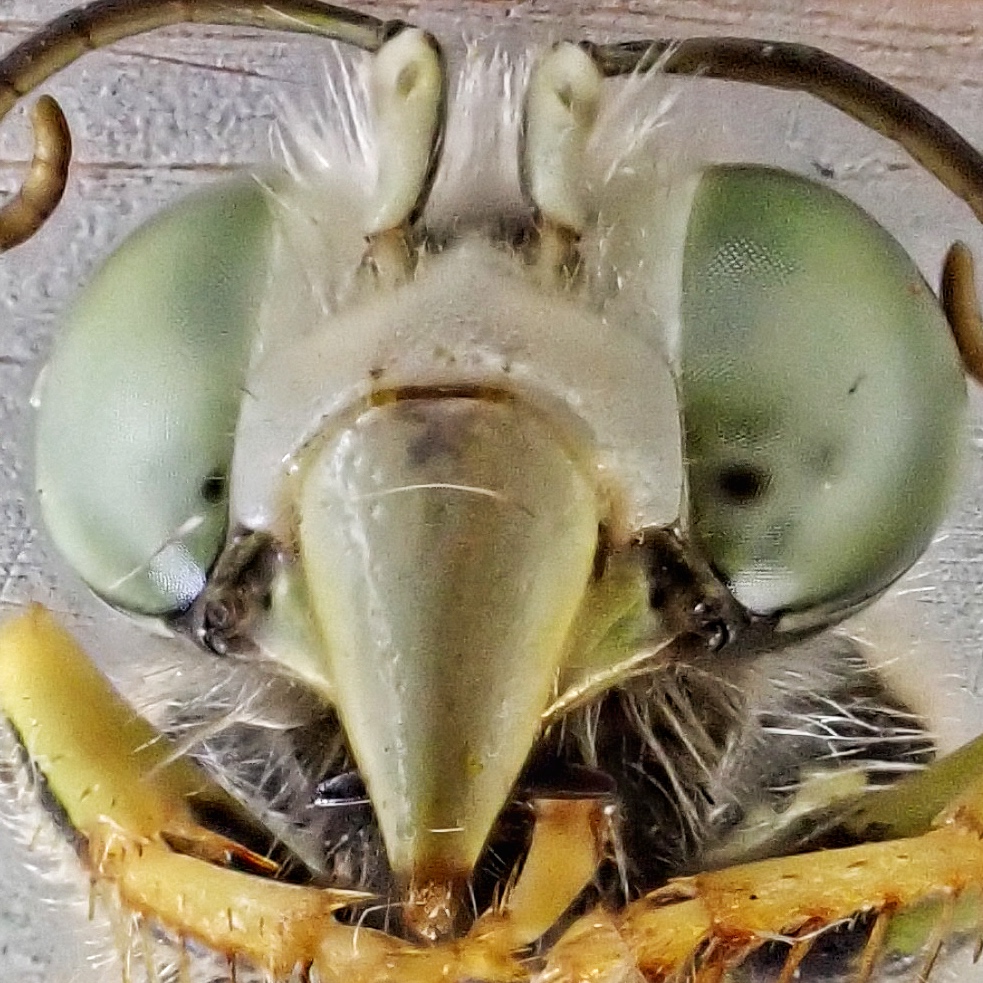
Bembix wasp mothers really work hard for their young! Into each nest they dig they deposit a single egg, and provision that nest with a paralyzed fly (various genera in Diptera, but excluding Nematocera, the mosquitoes, midges, and gnats). But when junior finishes that fly, mom brings another. This is called progressive provisioning, as opposed to mass provisioning wherein the mother stacks up as much food as the larvae needs to reach pupation, and it is considered to be a more evolved strategy (for a discussion of progressive vs. mass provisioning see Field, 2005). Larvae may eat 20 flies before pupation and the mother may have several different nests going at a time (called simultaneous progressive provisioning [SPP]; unfortunately, since I’m not a ‘real’ researcher, with academic credentials, I was not able to access information on how long it takes the larvae to pupate, or how many active nests the mother maintains at a time). These are very hard working and dedicated mothers!
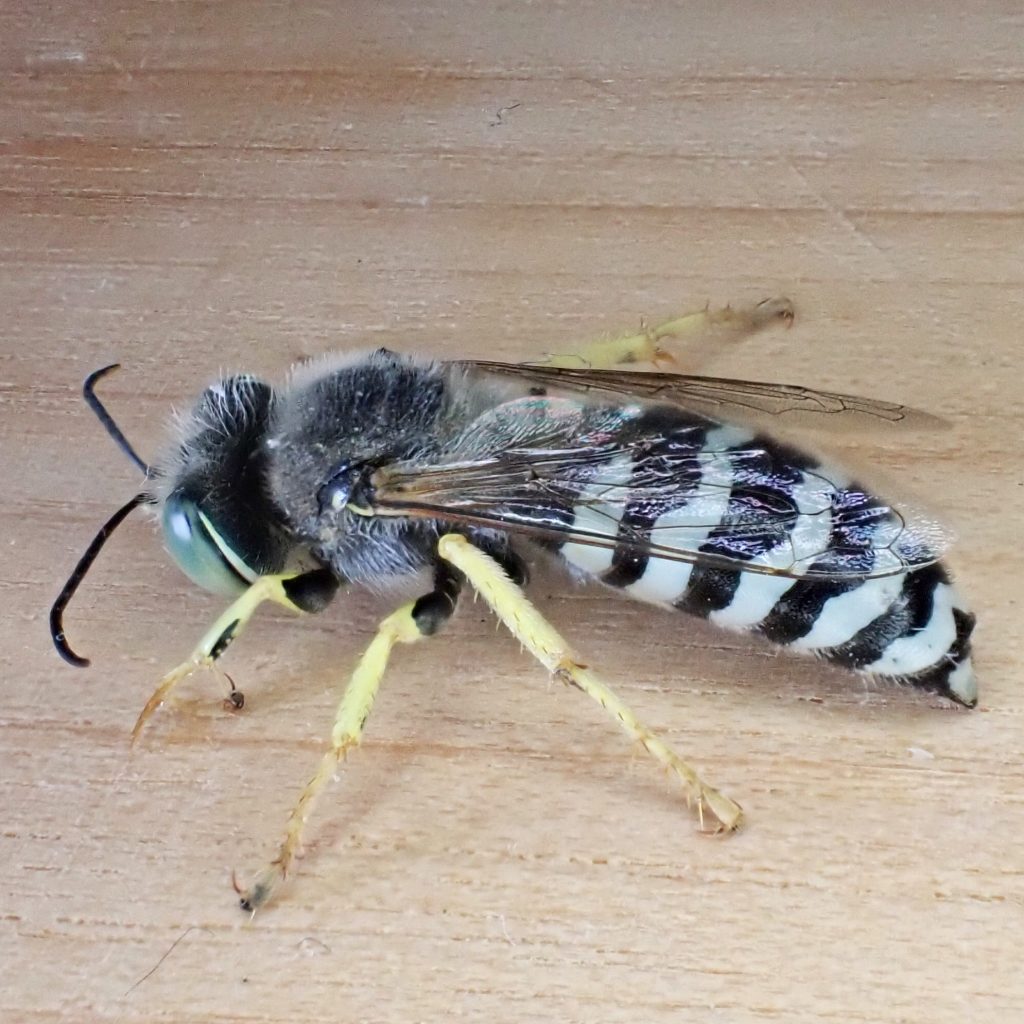
Bembix americana is not a wasp one needs to be afraid of. They are not prone to sting people and are not aggressive about defending a territory the way social wasps like yellowjackets and paper wasps are. They do have a tendency, that some find aggressive and which I must admit I haven’t experienced but think is rather endearing when I read about it, to fly circuits around people. But, as near as can be determined, they do this not to threaten anyone but to capture the flies which are attracted to peoples heat and sweat, so that they can feed them to their young. Now that’s just a really beneficial and responsible citizen, there!
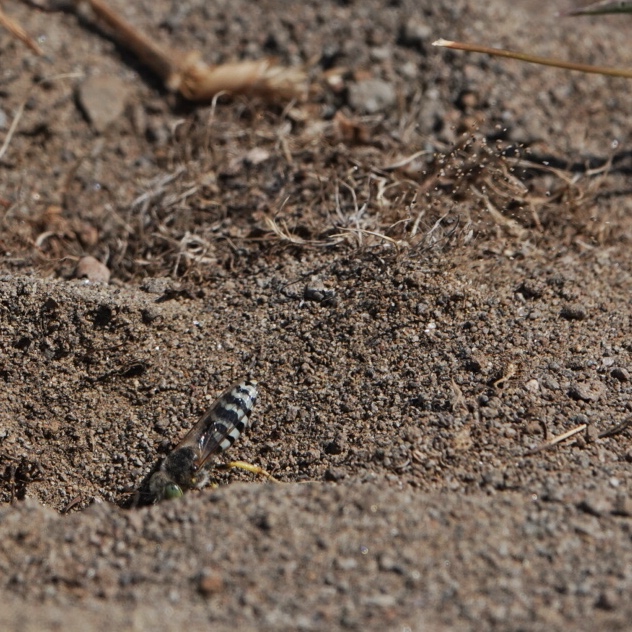
Once again I’m just skimming the surface here. For a more in depth look at Bembix sp. in general I highly recommend Eric Eaton’s blog article on them. Eric is a man who knows his wasps, and in fact recently authored the book “Wasps: The Astonishing Diversity of a Misunderstood Insect”, an excellent overview of wasps in general that fully lives up to its title, and is guaranteed to decrease fear and increase appreciation for these much maligned bugs.
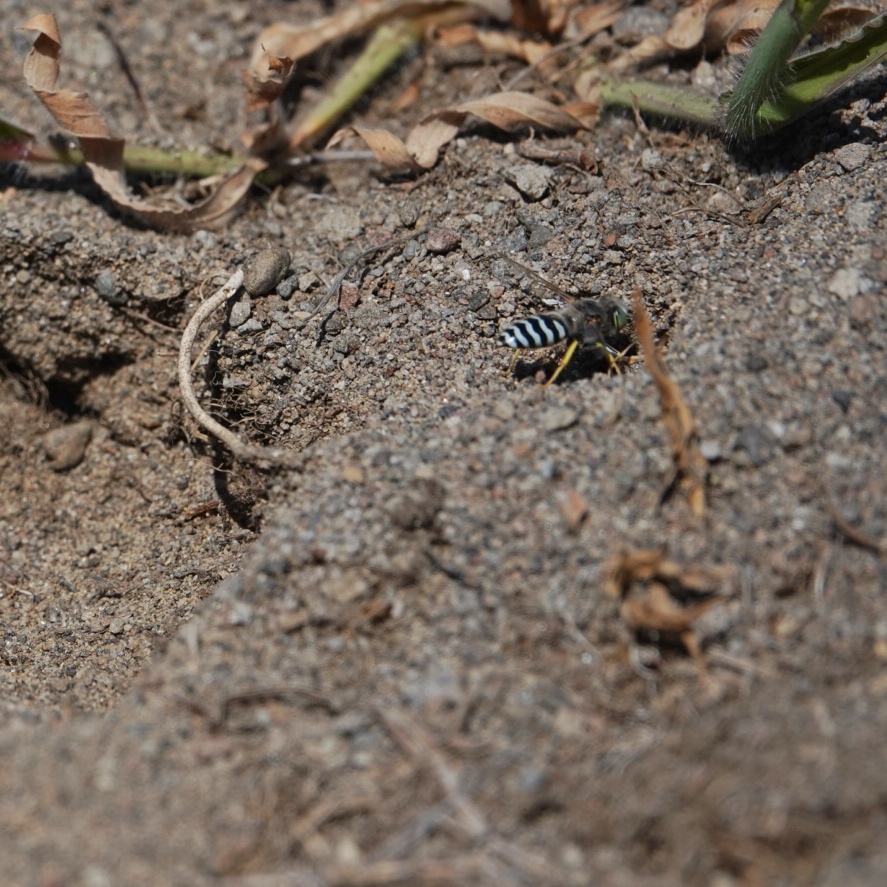
Description-Medium sized (11-16mm long) wasp with large green eyes, an unmarked but hirsute grey thorax (scutum), blue grey or yellow markings on their abdomen, and mostly yellow legs with dark femora, and usually having some dark markings on the tibia; abdominal markings slightly wavy, with those on tergite 1 separated in the middle, and the rest not quite, or barely, touching; face olive, or yellow if abdominal markings yellow; mid-femur of males conspicuously serrate; mid-tibial spur not reaching halfway into basitarsus.
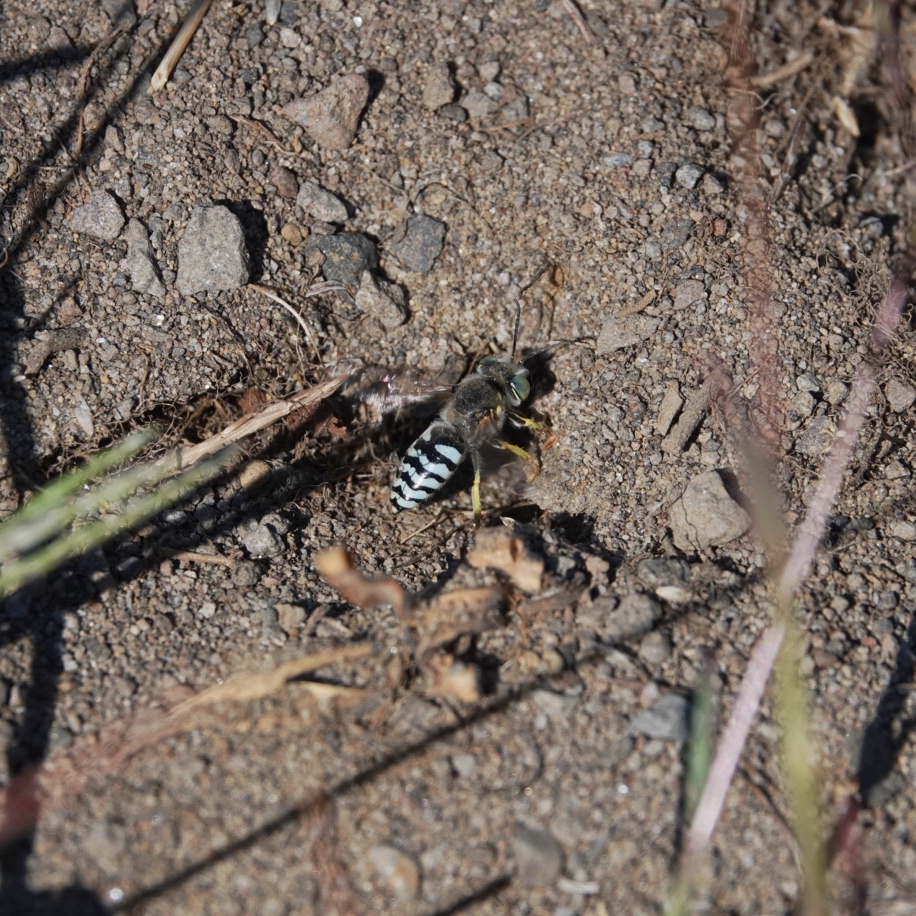
Similar species-Any positive identification of Bembix spp. will require a specimen in hand, good optics, and a key such as this one; B. amoena is larger (15-20mm), the mid-tibial spur reaches beyond the middle of the basitarsus, and males have a large, backward pointing ‘tooth’ on sternite 6; B. sayi has yellow spots on scutum and enclosed black spots on tergite 2 and 3; female B. melanapsis with brownish wings, males with mid-femur not serrate
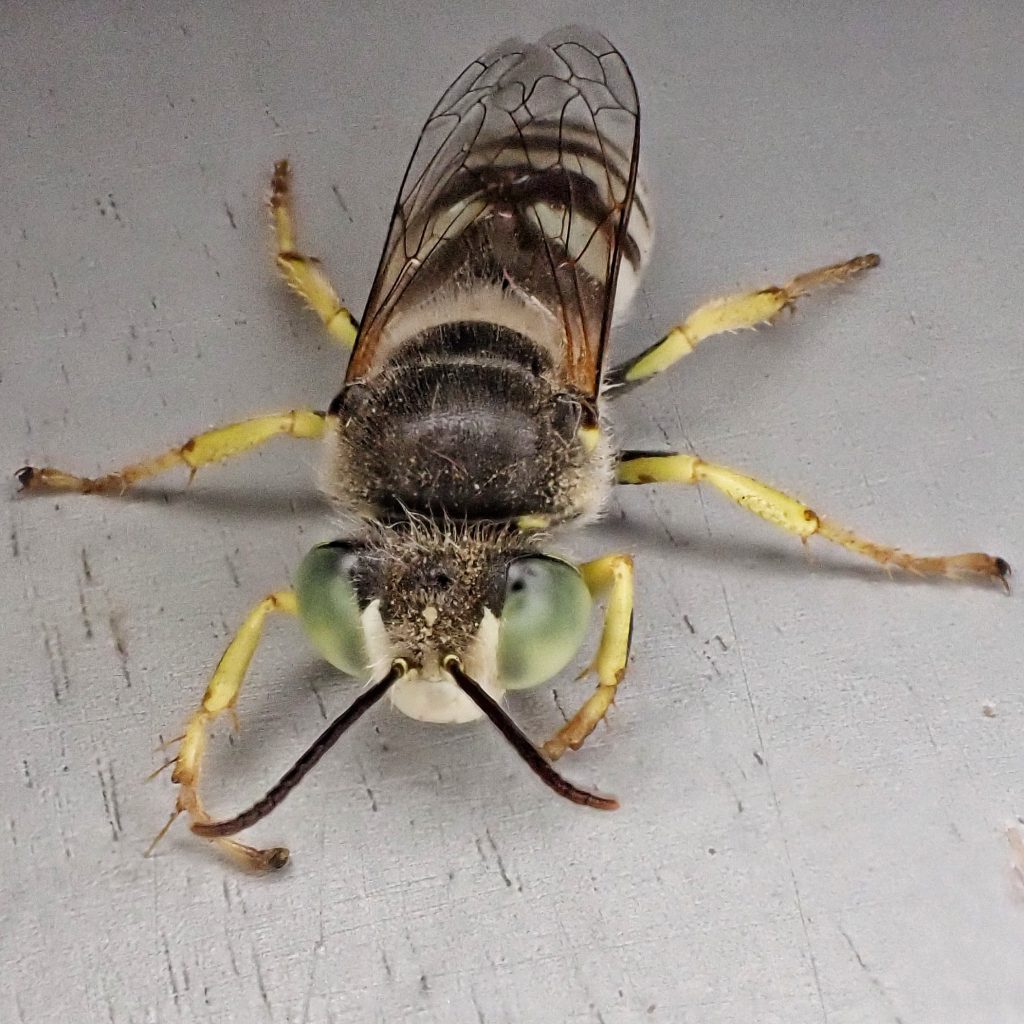
Habitat-Moist to mesic areas with sand and nearby flowers
Range-North and South America; appears to be primarily west of the Cascades in our region, with some population in forested or montane areas on the eastside.
Eats-Larvae eat flies in cells provisioned by their mother; adults feed on nectar and pollen.
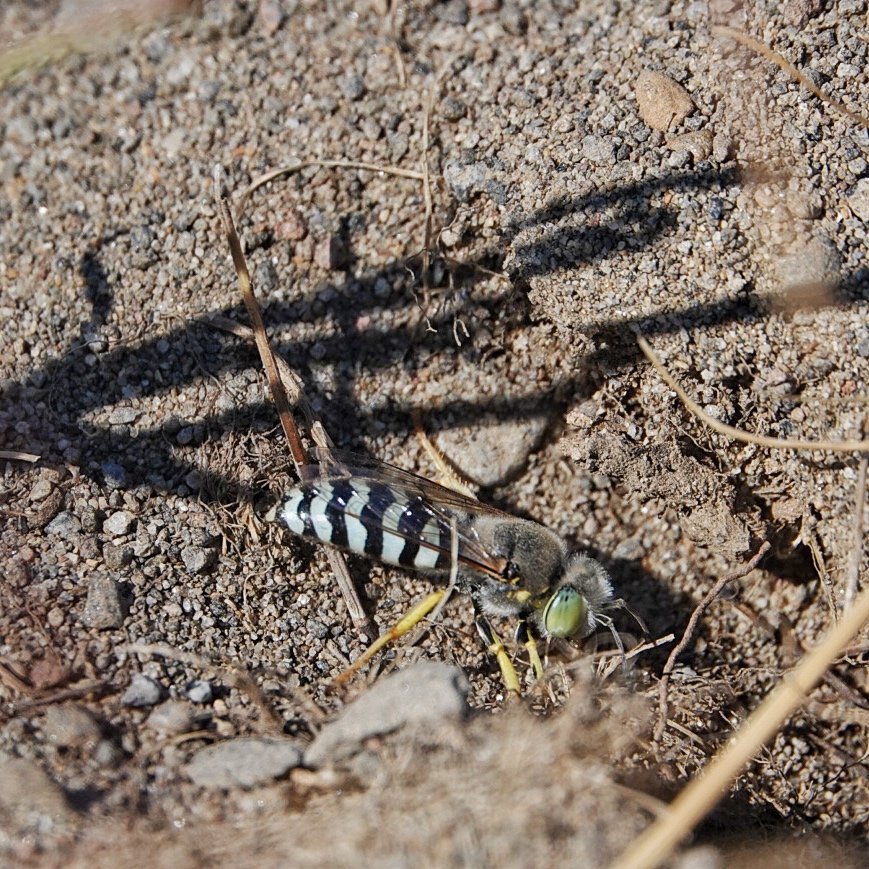
Eaten by– Larvae are parasitized by the cuckoo wasp Parnopes edwardsii, and probably by parasitic flies in Sarcophagidae (flesh flies or satellite flies) and Bombyliidae (bee flies);adults are hunted by robber flies (Asilidae) and parasitized by big-headed flies (Conopidae).
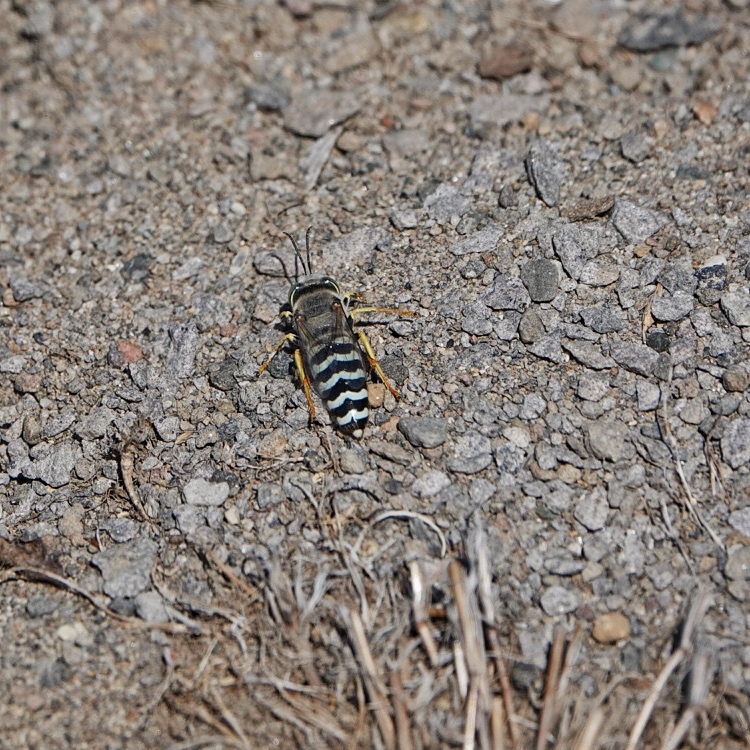
Reproduction– Males perform a ‘sun dance’ in search of females; mating starts in flight, with the male holding the female’s wings with its serrate femora, but is finished away from the denning area to prevent interruptions by other males;female digs a nest in sand or other loose, preferably mineral, soil, and lays a single egg per nest; overwinter as pre-pupa in diapause, pupate in the spring.
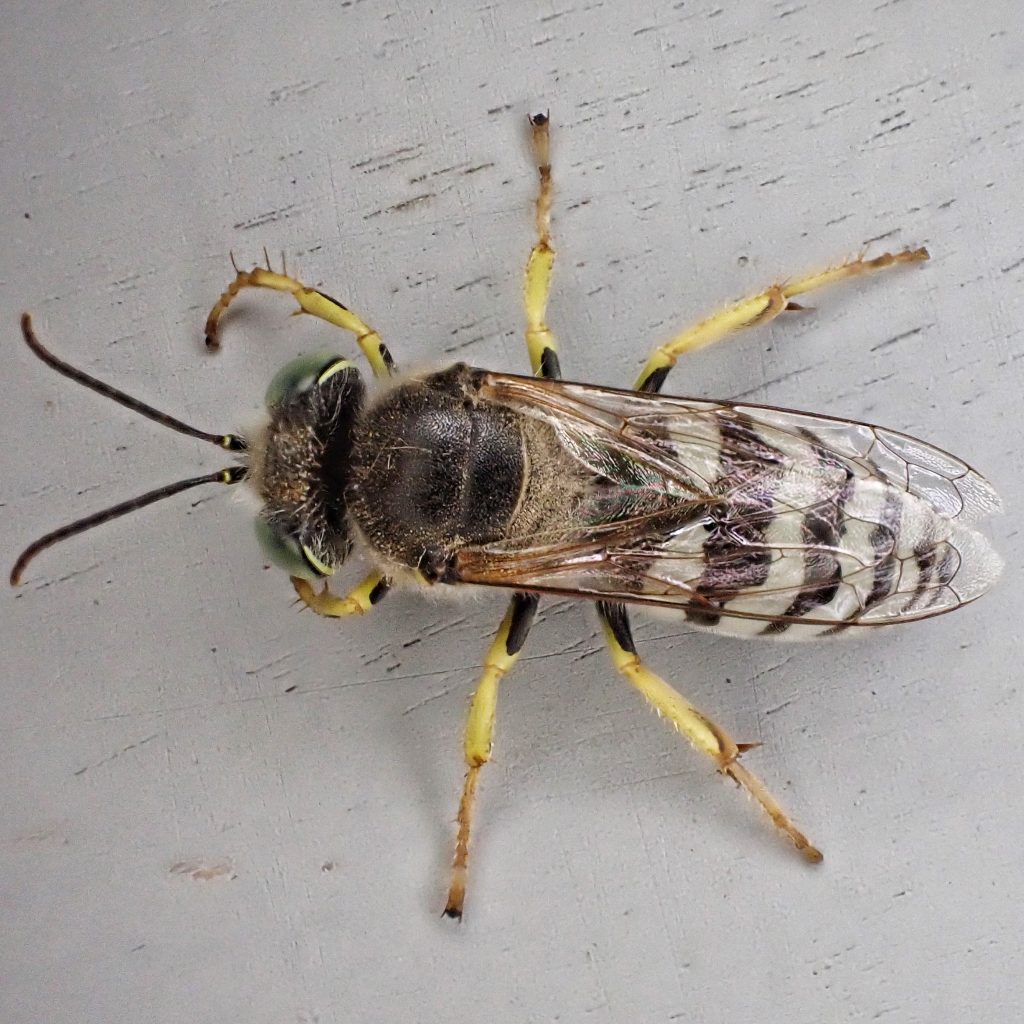
Adults active-June through September
Etymology of names–Bembix is from the Greek for ‘buzzing insect’. The specific epithet americana is from the continent where the type specimen was found, presumably the first North American Bembix named by Fabricius.
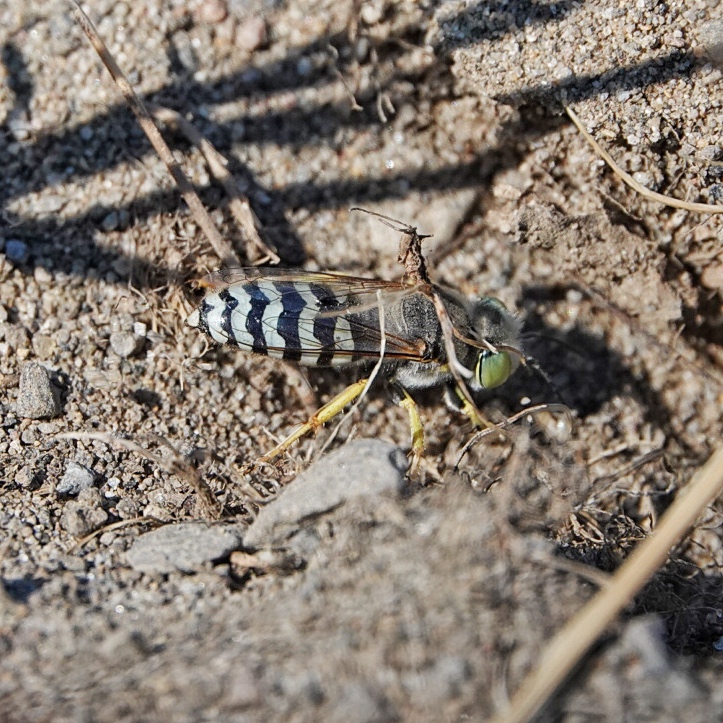
https://bugguide.net/node/view/79847
http://bugeric.blogspot.com/2015/01/sand-wasps-genus-bembix.html?m=1
https://essig.berkeley.edu/documents/cis/cis13.pdf
http://janamalinekphoto.blogspot.com/2016/08/western-sand-wasp-bembix-americana.html?m=1
https://academic.oup.com/beheco/article/16/4/770/215033
https://press.princeton.edu/books/hardcover/9780691211428/wasps
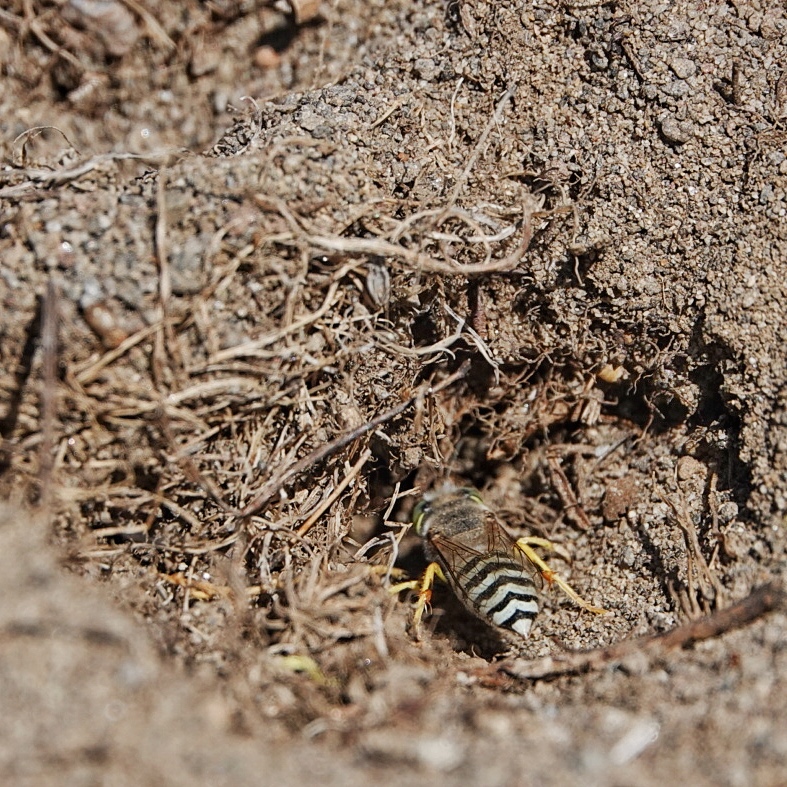
Thanks again!
Just love your blog!
Can’t wait till it will be interactive.
Will that be any time soon?
Jochen
Probably not for awhile, Jochen. Sorry! I figure to start talking to tech folks about that after I have at least a thousand species. Glad to hear you are still enjoying it! Thanks!